#ryukyu kingdom
Text


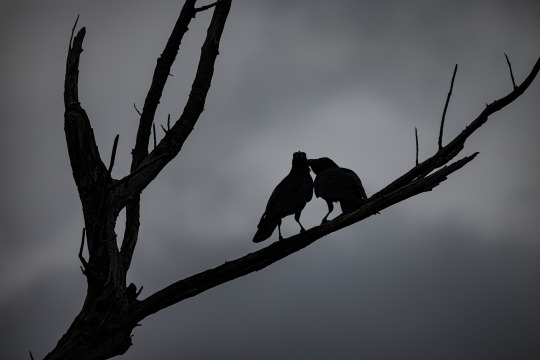


Their onyx feathers glistened in the eerie light,
woven in ebony nests, entwined and eternal.
Kunigami [国頭村],
Okinawa, Japan
[These two beautiful feathered souls shared a moment of pure adoration. I was blessed to capture this adorable encounter. 🖤]
Ph. Aleksandra
Instagram: tanzdreamer
#my photography#okinawa#mine#japan#日本#沖縄#国頭村#photography#photographers on tumblr#ryukyu kingdom#琉球國#beautiful#nature#corvids#crow#corvid#nature photography#crows#birds#烏#鳥#touching other worlds
663 notes
·
View notes
Text
By Luke Gentile
The FBI announced last week its recovery of at least 22 historical artifacts taken after the American victory at the Battle of Okinawa in World War II.
A deal to return the artifacts to the Government of Japan, Okinawa Prefecture, was arranged via the FBI, and a repatriation ceremony will be held after the artifacts return for the first time in nearly eight decades, according to a release from the FBI Boston Division.
Several artifacts date back to the 18th and 19th centuries and hold a place in the long history of Okinawa, including portraits, a hand-drawn map, pottery, and ceramics, the release noted.
“It’s incredibly gratifying when the FBI is able to recover precious cultural property that has been missing for almost 80 years,” Jodi Cohen, the special agent in charge of the FBI Boston Division, said.
“This case highlights the important role the public plays in recognizing and reporting possible stolen art. We’d like to thank the family from Massachusetts who did the right thing in reaching out to us and relinquishing these treasures so we could return them to the people of Okinawa,” Cohen said.
Multiple artifacts now returning to Okinawa were registered with the FBI’s National Stolen Art File in 2001 by the Okinawa Prefectural Board of Education, according to the release.
In 2023, the family of a late World War II veteran (who did not serve in the Pacific) discovered some of the valuable Asian art while they went through his personal items, and they found at least four of the works in the National Stolen Art File, according to the FBI.
“It’s an exciting moment when you watch the scrolls unfurl in front of you and you just witness history, and you witness something that hasn’t been seen by many people in a very long time,” Geoffrey Kelly, an FBI Boston special agent and Art Crime Team member, said.
“These artifacts are culturally significant, they’re important pieces of Japan’s identity. These were especially important because they were portraits of Okinawan kings dating back to the 18th, 19th centuries. This case really illustrates part of the work we do on the Art Crime Team. It’s not always about prosecutions and putting someone in jail. A lot of what we do is making sure stolen property gets back to its rightful owners even if it’s many generations down the road,” Kelly said.
Assisting the FBI in the return of the items was the Smithsonian Institute’s National Museum of Asian Art, according to the release.
“The FBI reached out, asked us for some help making sure they knew how to care for the works and that they had a safe place to store them while they worked out the repatriation details. It’s an honor to be able to help the works go back to their home,” Danielle Bennett, the head of collections management at the National Museum of Asian Art at the Smithsonian Institute, said.
You can see all of the recovered artifacts here.
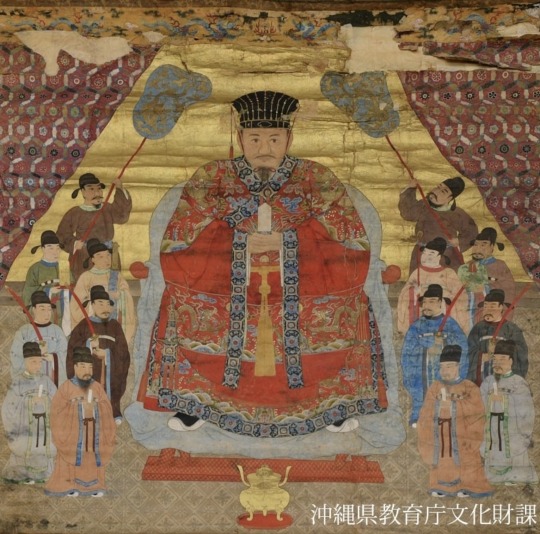
55 notes
·
View notes
Photo
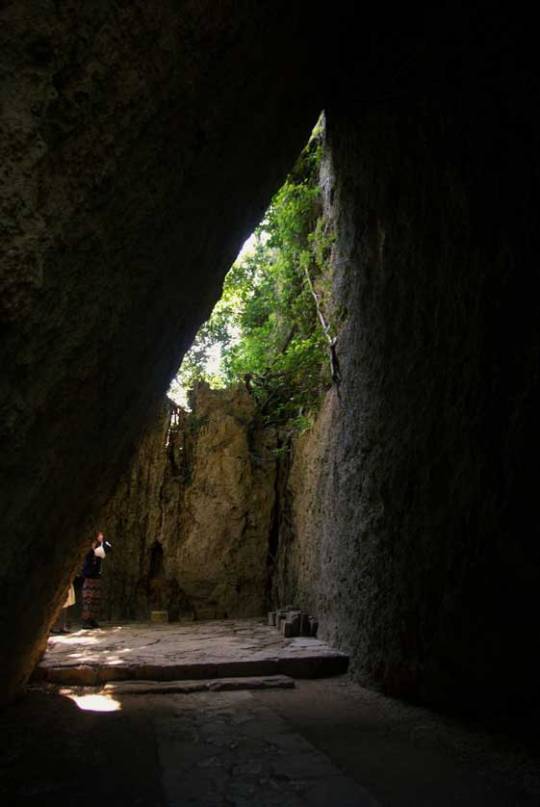
Legends and myths about trees
Utaki worship in Ryukyu Shinto - Forest where the gods descend in Ryukyu Shinto
Ryukyu Shinto is a polytheistic religion that has been practised mainly in ancient Ryukyu and the Ryukyu Kingdom (Ref). It lacks written scriptures, specific doctrines or founders, and is an animistic and ancestral religion of mythology and nature worship.
Utaki are places where the mythical deities of the Ryukyu Islands exist or visit, and where ancestral deities are worshipped. It is a central facility in local rituals and still attracts many worshippers as a sanctuary that protects the area.
In Ryukyu Shinto, it is women who serve the gods. Since ancient times, women were considered to have stronger spiritual powers than men in the Ryukyus, and the noro, who served the gods, and the yuta, who were shamans, were also women. So, it was completely off-limits to the public, especially men, during the Kingdom period, and even the king had to change into women's clothing to enter the sanctuary. Even today, most of them only allow men to enter up to a certain area.
Many Utaki are forest spaces, springs or rivers, and sometimes the island itself. Some Utaki have a stone monument called Ibe or Ibi stone in the centre of the space, but this is originally a sign to which the deity descends and is not a sacred body in the strict sense of the word (although in many places it is treated as a sacred body).
Among others, the Sefa Utaki, the highest sacred site, is believed to be a Utaki from the 15th-16th century, during the reign of King Shō Shin, the second Shō dynasty of the Ryukyu Kingdom. “Sefa” means "highest" and "Sefa Utaki" means "highest Utaki", which is a common name. The official name of the deity is "Kimigataki, Syugataki-no-Ibi (meaning sanctuary where the lord descends)".
Later, following the invasion of Satsuma (now Kyushu, Japan), the original beliefs and ancient colours of the theocracy were gradually weakened and dismantled by reforms that promoted modernisation.

木にまつわる伝説・神話
御嶽(うたき) 〜 琉球神道における神が降臨する森
琉球神道は、古琉球および琉球王国(参照)を中心に信仰されてきた多神教宗教である。固有の教典や具体的教義、開祖を欠いており、神話、自然崇拝のアニミズム的かつ祖霊崇拝的な宗教である。
御嶽(うたき) は琉球神話の神が存在、あるいは来訪する場所であり、また祖先神を祀る場でもある。地域の祭祀においては中心となる施設であり、地域を守護する聖域として現在も多くの信仰を集めている。
古来、琉球では女性の方が男性よりも霊力が強いと考えられており、神に仕えるノロやシャーマンであるユタも女性であった。そのため、王国時代は完全に一般人、特に男性の立ち入りは厳禁とされ、王であっても女性の衣装に変えて入域しなければならないほどの聖域だったと云われている。現在でもその多くが一定区域までしか男性の進入を認めていない。
御嶽(うたき) の多くは森の空間や泉や川などで、島そのものであることもある。御嶽(うたき) によっては空間の中心にイベあるいはイビ石という石碑があるが、これは本来は神が降臨する標識であり、厳密な意味でのご神体ではない (ご神体として扱われているところも多い)。
中でも、最高の聖地である斎場御嶽 (せーふぁーうたき) は、15世紀-16世紀の琉球王国・尚真王時代の御嶽であるとされる。「せーふぁ」は「最高位」を意味し、「斎場御嶽」は「最高の御嶽」ほどの意味となり、これは通称である。正式な神名は「君ガ嶽、主ガ嶽ノイビ (最高の神が降臨する聖域の意)」という。
その後、薩摩 (現在の九州) の侵入を受けて以後、近代化を進める改革によって、神権政治の本来の信念と古来の色彩は、次第に弱まり、解体されていった。
#trees#tree legend#tree myth#utaki#sefa utaki#ryukyu shinto#mythology#legend#ryukyu kingdom#okinawa#gods descend forest#nature#tradition#art#sharmans#spiritual powers
150 notes
·
View notes
Text
(I intentionally left out many details of her life in this article on purpose.)
My mother-in-law Kazuko passed away on August 18, 2012 11:31 AM
Okinawa is known today as the Hawaii of Asia. As Kazuko's story begins in the days before the Battle of Okinawa. A story about an Okinawan woman who led a quiet life that was anything but that.
Japanese occupation started early for Okinawa (Ryukyu Kingdom). And with the events of WW2 leading up to the American forces getting closer to the Okinawa Islands. The Okinawans were barely surviving the Japanese occupation. And now they began preparing for the coming invasion from the American forces and millions of insects.
The Japanese military had built underground tunnels. Turning Okinawa into a fortified island. All at the expense of the Okinawan people.
Food had been taken by the Japanese soldiers that led to mass starvation. Okinawans who spoke their own language were killed as spies by the Japanese military.
Just before the American bombing began, people fled to the natural underground caves or tried to get off the island. For those that hid in the caves faced many obstacles. Millions of dangerous bugs inhabited these caves. Their bites were so painful that you wished you were dead.
The military worked the Okinawans into hysteria. To commit suicide rather than being captured by the American military. Many did commit suicide but the Japanese military were responsible for it. Kazuko, who was nine at the time, remembers hearing stories of gun fire inside the caves days before the Americans ever came ashore.
She remembers the Japanese military was providing refreshments for everyone in the caves. But as the US military preparedto bomb the island, the Japanese military never showed up. She later learned that those who drank the milk had died.
The US military came ashore as all the Okinawans did everything they were told to do. As everyone left the caves, they were shocked to see the landscape of the island. Trees, towns even the terrain was all gone.
She said it was like a barren wasteland. Covered with so many US military personnel and vehicles everywhere. Ships off in the distance made her think that she would never see her homeland restored again.
Tents were set up for everyone and there were doctors and other medical personnel to help all those injured. My mother-in-law had bite marks on her and the doctors bandaged her up.
She was also given candy by a few of the American soldiers. The military also provided meals for all the Okinawans. To this day the people of Okinawa really love pork and SPAM.
She got sick one day and the military nurses took care of her. She remembers there was plenty of food to eat and everyone took great care of her and other injured and sick people.
A few years after the war ended the US troops continued to stay on the island. Many people from other Asian nations came to help rebuild Okinawa.
In her final years, Kazuko travels were restricted due to health issues with her kidneys. Eventually she had to undergo dialysis. It wasn’t too long afterwards that this led to her death.
While in the hospital one of her granddaughters came to visit as my sister in law was preparing to visit Kazuko at the hospital. Once there Kazuko was starting to slip away.
Kazuko wanted to talk with her other daughters and grandkids. We were called nearly at midnight our time.
Kazuko’s hearing was going as we all had to scream into the speaker phone that we loved her. She finally acknowledged that she heard every one of us. The phone called ended but within two minutes we were called back. Kazuko had passed away.
Many current and former Okinawan government officials came to the funeral. It was a surprise to Kazuko’s family and friends. These officials grew up with Kazuko. They worked tirelessly in the days after WW2 to rebuild Okinawa.
A simple woman who survived many obstacle. Such as going against her doctor’s orders and came to America in 1999 and 2001 to see her newborn grandsons.
The final days of her life was going to the hospital every other day for dialysis treatments. Those treatments had blackened her body due to multiple needle marks.
But in those final moments of her life she was surrounded by her family in person and through cell phones. She died August 18, 2012 11:31 AM Japan time with the sounds of her children and grandchildren all expressing their love for her.
I have just scratched the surface knowing that there is more about her. She was a private woman who kept many things to herself. But I put a part of what I do know to print in the hopes that others can remember her as well.

22 notes
·
View notes
Text
Hell's Paradise: Jigokuraku
The moment i saw the news i got interested and once i watched the swordfights I know it worths writing about it. Yuki Kaku’s manga “Hell's Paradise: Jigokuraku” It gets anime adaptation :)

Plot:
Gabimaru, once exalted as the strongest ninja, but who has now quit his trade, violating the laws of his village. After being captured, he claims he has nothing left to live for. However, due to his superhuman levels of training, he has inadvertently survived multiple executions, from attempts at beheading to burning at the stake. The female executioner Sagiri Asaemon tells him that he has lingering attachment to life, and issues him a mission to win his acquittal: to find the elixir of immortality.
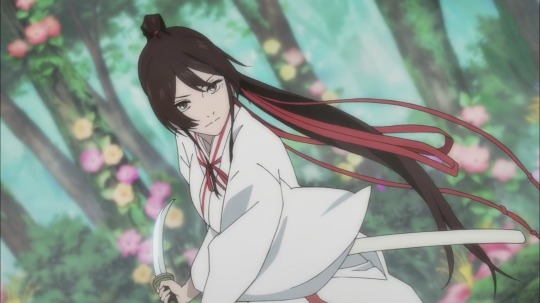
it’s not only for the historical background,nor Gabimaru’s quest to find peace. it;s Asaemon is a formidable swordswoman.She’s so Elegant,Pretty too:)

I’m waiting to see how it’ll play out:)
#Jigokuraku#地獄楽#Yuzi Kaku manga#賀来ゆうじ#Gabimaru Jigokuraku#Jigokuraku Yamada Asaemon Sagiri#Ryukyu Kingdom#Tokugawa era#historical drama#dark fantasy#supernatural#psychological thriller#Shueisha inc#Shonen manga#株式会社集英社#Shōnen Jump+#少年ジャンプ+
2 notes
·
View notes
Text
差別・同化圧力・収奪の歴史
(前略)大阪府警の機動隊員による「土人」発言など、沖縄の人々への差別は今も続いています。そうした言葉を耳にすると、体が凍り、骨に響くような痛みを感じる。それは差別への憤りより、まず文字通りの身体の痛みなんです。悲しいけれど、その痛みを感じるのが沖縄人、琉球人なんです。
「沖縄が好きだから私も沖縄人だ」という大和人もいます。素朴に口にしているつもりかもしれませんが、それも「植民地主義」だと気づいてほしい。強制的に琉球国は廃され、沖縄県として日本に組み入れられた。激しい差別から逃れるため、琉球人は日本への同化に追い込まれた。日本復帰もその延長にある。それでも、日本の利益のために沖縄、琉球は収奪され続けている。基地だけでなく、観光や文化もです。
自己の尊厳回復のためにつかみ取ってきた沖縄人、琉球人というアイデンティティーまで、泥棒するのはやめてほしい。沖縄、琉球に日本は何をしてきたのか。自分の歴史的立場はどこか。それを自覚したとき、大和人は、沖縄人、琉球人と出会えるのかもしれませんね。
2023/02/11 朝日新聞
オピニオン&フォーラム 耕論
「沖縄アイデンティティー」
大和人に差別される痛み
知念ウシ(ムヌカチャー)
0 notes
Text

Hand Tattoos from Ryukyu
via | https://www.instagram.com/p/CWzrjX3g_0g/
#Ryukyu#Kingdom of Ryukyu#Okinawa#Yonaguni Island#irezumi#tattoos#tattoo#hajichi#hand tattoo#scroll#history#world history#instagram
65 notes
·
View notes
Text
sometimes researching for avatar redesigns has you 6 layers deep into the Japan's Meiji era allies wiki
#im trying to mess with some of the stuff that feels weird about the ways the fire nation is depicted idk#like i do not feel optically it is good for like them to be so heavily based on japan's imperialist actions#while dressed in clothes that come from places japan colonized#but i dont want it to just be solely japanese though i did draw zuko and azula in hakama but its largely cause i wanted to draw hakama#and like the only place with strong japanese influence being kiyoshi island and my own frustration with the modern day samurai depiction#i think fundamentally it isnt a choice that had as much thought as i am putting in put into it but it does raise an eyebrow for me#anyway i think keeping the thai influence is fine despite the brief invasion japan had into thailand due to thailand then allying with japa#and further allying with the axis due to allying with japan#ugh and ive been told not to think this much about it because its fiction but its also fiction so so so heavily based on real places#and when you base fiction on real cultures you fall into some unintentional pitfalls#i also fucking hate the royal fire nation robes they look so meh and the most costumey out of everything in the show#they look like heavy blankets despite being a supposedly hot nation#theres ways to have heavy robes (heian era japan) but they look like i make them out of fleece and velvet blankets#back to kiyoshi island i think the really only aesthetically japanese reference in the show being an island of noble warriors is lame#plus over done#it feels like nowadays theres a lot of people who get all whiney about people saying fire nation is based off japan#but like dude the creators in the comics and korra like go even more into the japanese influence and clearly it was the original intentions#also i do think you could do some pretty interesting world building by having say there be an older cultural influence on kiyoshi island#from the fire nation especially if the place is established as a central port area then you tie in some okinawan or even hawaiian reference#and gives an explanation that makes sense to why kiyoshi stands out from the rest of the earth kingdom you have long term cultural trading#and it establishes interesting relationships even pre kiyoshi time thereby drawing back onto some real historic references#cause for awhile ryukyu china and japan used to be this trading triangle which could explain some of these various influences going on#i think you can get a really interesting harmony when you create the fire nation out of a mix of japan and thailand#i mean both have these floating buildings due to living on some pretty wet lands and theres harmony in that mix#god i did see one person go like “fire nation is more based on china because theres a lot of red and red is important in china”#my brother in christ red is also important in japan#red is important in like many many asian cultures#i mean of course a lot of that importance stems from china and cultural exchange with china but idk kinda silly to say with your whole ches#like if you want to bring china in then the dragons are the biggest thing like sure some mythos has dragons in japan#but a lot of those comes from china in some way
10 notes
·
View notes
Text
I just made a new chapter
#incorrect quotes#countryhumans incorrect quotes#countryhumans del pilar#countryhumans ryukyu kingdom#countryhumans oc#countryhumans sakhalin island#countryhumans japan empire#countryhumans japan
1 note
·
View note
Text
book: the trade between japan and the song dynasty accelerated in the twelfth century when taira no kiyomori--
me, screaming: キ・ヨ・モ・リ、お前また来たのかー
#shut up alix no one cares#the book is the ryukyu kingdom: cornerstone of east asia by akamine mamoru if people are interested#but fuckin TAIRA#THE TAIRA RUINING MY LIFE YET AGAIN!!!!!!
0 notes
Text
friendship ended with 'kiku was a shy and lonely hermit for most of his life only until the meiji era', 'kiku was reasonably well-travelled regionally and a seasoned mariner who culturally has a deep relationship with the sea and who, centuries ago, learned advanced shipbuilding and navigation from yong-soo (who is also the old korean kingdom of silla and another reason the whole student backstabbing his teacher theme is a recurrent thing for kiku.) isolationist at times when domestic political turmoil constrained things, but also adventurous and ambitious, yearning to see what is further beyond. many facets of the same whole. he's an old mariner, and that's why when alfred forces the end of isolationism at the point of a gun(boat), for kiku it was like picking up a sword that he hasn't used in a while, but which he's very familiar with' is my best friend now:
5th century: Goguryeo–Wa conflicts (Korea and Japan)
6th century: Japanese embassies to Sui China
7th century: Baekje-Tang War (Korea, Japan and China)
9th century: Japanese embassies to Tang China
13th century: Mongol invasions of Japan (self-explanatory)
14th—16th century: Japanese wokou piracy
1565: Battle of Fukuda Bay (Portugal and Japan)
1582 Cagayan battles (Japan, China, Korea (pirates) vs. Spain)
1590s CE: Imjin War (Japanese invasion of Korea with the intention to also conquer China)
1609: Invasion of the Ryukyu Kingdom
1613: Hasekura Mission to Mexico and Europe
#hetalia#hetalia headcanons#hws china#hws japan#hws south korea#more complexity than he is a Shy Hermit please it's ludicrous as someone whose folks got invaded by japan so many times lol#he is not shy he is a right pain in the arse and regional hothead when he wants to be lmao
81 notes
·
View notes
Text
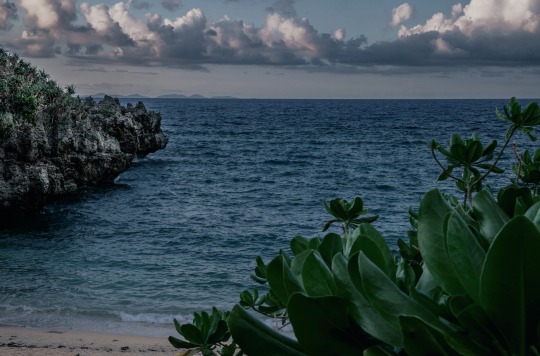
Beyond the eternity entwined, I hear life.
Nakijin [今帰仁村]
Okinawa [沖縄], Japan
Ph. Aleksandra
Instagram: Tanzdreamer
#今帰仁村#沖縄#okinawa#座喜味城#mine#island#japan#日本#photography#my photography#photographers on tumblr#personal#ryukyu kingdom#琉球國#beach#ocean#nature#nature photography#touching other worlds
329 notes
·
View notes
Text
Huh. So, in SK8, three different characters that I've found on a cursory glance are named after major places on Naha, where the story is set. The most obvious one is probably Joe, whose family name Nanjo comes from Nanjō City, the smallest city on Naha, famous for its castle ruins. Nearby is the town of Chinen, where we get Miya's name from, and to the south is Cape Kyan, where Reki's name is from.
These are probably remenants from the Ryukyu kingdom, when upper-class Okinawans would get their family names from the places they ruled or came from. Families living there at the time of annexation under the Meiji dynasty would also have been added to the name register under their places of residence. This means that Miya, Joe, and Reki's families have been in Okinawa for a WHILE, and that there's a pretty good chance they're descended from the upper-class families who were allowed to have kamei (家名) for names.
Shadow's family name Higa isn't a place name, but it is the most common surname in Okinawa, (maybe to signal to viewers that he isn't very "rare" or talented, or to make his plainclothes character seem all the sillier,) tying him pretty strongly to the island. Langa's name, Hasegawa, is also not a direct placename, but it's a common name among the Ryukyu islands and certain parts of eastern Japan, and would hold a distinctly "Okinawan" or "Beach-y" vibe to Japanese viewers.
In contrast, Cherry's surname is pretty unique. I don't actually speak Japanese, so I can't read the articles that came up when i searched the kanji, but given that his character page was the eighth to come up in search results and the second to come up when i searched the kana, I'd wager that it was made for the show. Maybe in-universe, his family invented it during the annexation? Or maybe it isn't an actual family name, and is Cherry's "pen name," as it was, for his art. It's a very artistic sounding name.
Again, though, I don't read Japanese, and most of what I know about Okinawan family names comes from Wikipedia trawling. If anyone has better input, I'd be happy to hear it.
#sk8 the infinity#sk8#kaoru sakurayashiki#reki kyan#kojiro nanjo#langa hasegawa#miya chinen#hiromi higa#shadow sk8#joe sk8#cherry blossom sk8#snow sk8#i might do a look at ADAM's name as well when im not trying to get to bed.#anyway.
26 notes
·
View notes
Photo
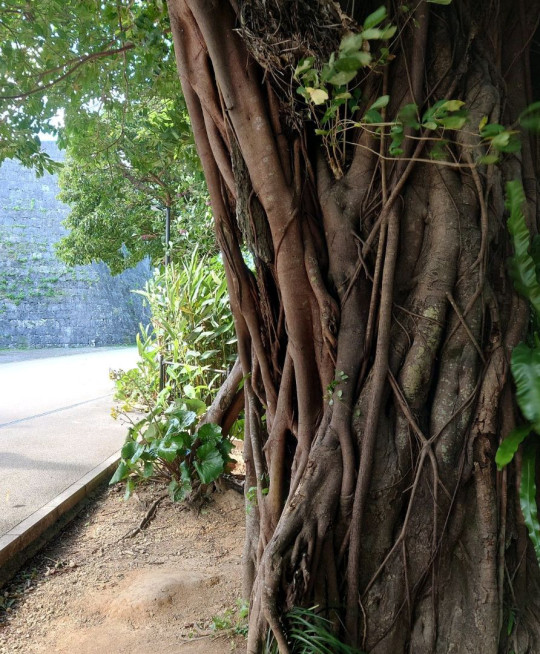
[Photo above: Banyan tree in Shuri Castle Park]
Legends and myths about trees
Forest spirits and natives (5)
Kijimuna – Mischievous red-haired spectres
Kijimuna are legendary small tree spirits from the Okinawa Islands in Japan, who live in trees (generally old banyan trees). They are said to look about 3 or 4 years old and have red hair.
Another name for the kijimuna is bungaya, which means roughly large-headed. The Kijimuna are known to be very mischievous, playing pranks and tricking humans. One of their best-known tricks is to lie upon a person's chest, making them unable to move or breathe such as sleep paralysis. Even though the Kijimuna are tricksters, they have been known to make friends with humans.
They are skilled fish catchers and only eat the left or both eyes of the fish they catch. Therefore, if you become friends with a Kijimuna, you can always get a fish and become rich. They are good at diving and fishing and catch a lot of fish in seconds. But all the fish they catch have no eyes. They can also run around on the water surface and can stand on the water while carrying people.
They are extremely hatred of hot pot lids, octopus, chickens and human farts, and it is forbidden to let them near the Kijimuna. They also die (or are forced to move to another tree), if a nail is driven into the tree in which they live. They will take terrible retribution, including murder, against anyone who breaks these prohibitions.
Nevertheless, as long as one do not break these prohibitions, they are basically harmless to humans, and many lores say that they are "good neighbours" with humans.
[History of Ryukyu Islands (collective name for Amami Islands, Okinawa Islands, Miyako Archipelago and Yaeyama Archipelago)]
The Ryukyu Islands are known to have been inhabited by humans for about 32,000 years.
The Ryukyu Kingdom was a monarchy, existed in the southwestern islands of Japan for about 450 years, from 15th century to 19th century. It developed through diplomacy and trade with China, Japan, Korea and Southeast Asian countries, and the castle of the Ryukyu dynasty, Shuri Castle, was the political, economic and cultural centre of its maritime kingdom. In the late 19th century, the Japanese Government, dispatched troops to oust King Shoutai from Shuri Castle and proclaimed the establishment of Okinawa Prefecture (Ryukyu Disposition). Here, the Ryukyu Kingdom was destroyed.
Genetic studies have shown that populations in the Ryukyu Islands (Okinawa Islands, Miyako Archipelago and Yaeyama Archipelago) have no direct genetic link to mainland China or Taiwanese populations and have identical paternal lines to mainland Japan, and nuclear DNA analysis in 2018 showed that genetically, Ryukyuans are the most closely related, followed by mainland Japanese, from the Ainu (Ref) perspective.
Furthermore, in 2021, a paper on archaeogenetics published in the journal Nature stated that DNA analysis of prehistoric human bones excavated from the Nagabaka (lit. Long graveyard) site in Miyakojima City showed that they were "100% pure Jomon", a research finding that indicates that prehistoric archipelago people came from the Okinawa Islands.

木にまつわる伝説・神話
森の精霊たちと原住民 (5)
キジムナー 〜 いたずら好きな赤毛の妖怪たち
キジムナーは、日本の沖縄諸島に伝わる伝説の小さな木の精霊で、樹木 (一般的にはガジュマルの老木) の中に住んでいる。見た目は3、4歳くらいで、赤い髪をしていると言われている。
キジムナーの別名は「ブンガヤ」であり、「頭の大きい」という意味である。キジムナーは非常にいたずら好きで、いたずらをして人間をだますことで知られている。最もよく知られているのは、人の胸の上に横たわり、身動きや呼吸をできなくさせる「金縛り」だ。そんなキジムナーだが、人間と仲良くなることもある。
魚捕りが巧みであり、しかも捕った魚の左目または両目だけしか食べない。その為、キジムナーと仲良くなれば魚をいつでも貰え、漁運に恵まれる。海に潜って漁をするのが得意であっという間に多くの魚を獲る。でも、彼らが獲った魚は全部目が無い。また、水面を駆け回ることができ、人を連れながらでも水上に立てる。
熱い鍋蓋、タコ、ニワトリ、人間のおならを極端に嫌い、それらのものをキジムナーに近付けるのは禁忌である。また住んでいる木に釘を打たれると死ぬ (或いは別の木への転居を余儀なくされるとも)。これらの禁忌を破った人間に対しては、殺害を含む恐ろしい報復を為す事も辞さない。
然し、禁忌さえ破らなければ基本的に人間には無害な存在であり、人間とは「良き隣人」であると言う伝承が多い。
[琉球諸島 (奄美群島、沖縄諸島、宮古列島、八重山列島の総称) の歴史]
琉球諸島には、約3万2千年前から人類が住んでいたことがわかっている。
15世紀から19世紀までの約450年間、日本の南西諸島に存在した君主制国家、琉球王国は、中国をはじめ日本、朝鮮、東南アジア諸国との外交・貿易を通して発展し、琉球王朝の王城、首里城はその海洋王国の政治・経済・文化の中心にあった。しかし、19世紀後半、日本政府が軍隊を派遣し首里城から国王尚泰 (しょうたい) を追放し沖縄県の設置を宣言した(琉球処分)。これによって、琉球王国は滅亡した。
遺伝子研究では、琉球列島 (沖縄諸島、宮古列島、八重山列島) の集団は、遺伝的に中国本土や台湾の集団との直接的なつながりはなく、日本本土と同一の父系を持つという研究結果や、2018年の核DNA分析から遺伝的に、アイヌ(参照)から見て琉球人が最も近縁であり、次いで日本本土人が近縁であるという研究結果が発表されている。
さらに、2021年には、宮古島市の長墓遺跡から出土した先史時代の人骨をDNA分析した結果、「100%純粋な縄文人」であったとする考古遺伝学の論文が雑誌「ネイチャー」に掲載され、先史時代の列島人が沖縄諸島から来たことを示す研究結果が発表されている。
#trees#tree legend#tree myth#kijimuna#banyan tree#tree spirit#okinawa#ryukyu islands#ryukyu kingdom#syuri castle#legend#mythology#folklore#nature#art#history
156 notes
·
View notes
Text
destruction as a means for healing
there's very interesting parallels between watatsumi island and scaramouche.
there's so much i need to explain regarding lore and buddhism to understand how I'm almost giving up, but i really like the idea overall, so we persevere.
buddhism is divided into three branches. mahayana is the one that spread to japan and syncretized with shinto
inazuma's narratives take inspiration from japanese mahayana buddhism (obviously), especially for characters like ei and to a lesser degree kazuha
watatsumi was inspired on ryukyu kingdom (i wanna complain about this in detail but not today) who had their own religion, most closely related to shinto. they did receive foreign influence, but the pattern im tracing is only in terms of the themes, not implying buddhism is directly tied to its culture
the goal of buddhism is basically to meditate ur way out of the cycle of reincarnation. the world is illusory and ur trapped in it because u cling to ur suffering (im simplifying it), so ur supposed to follow the doctrines and practices in order to integrate them to ur life in a way that it becomes natural.
things like ei quelling her desires or being against visions or becoming disossiated from her sense of self are all nods to these buddhist principles. so is kazuha choosing to let go of his pain and burdens (material and emotional attachments) in order to live with inner peace.
on the other hand, we have watatsumi and scaramouche who do anything but. their lives are defined by the sins of their pasts and the resentment they carry with them.
watatsumi descend from enkanomiya, and i need to point out this pattern:
they were abandoned by a god (the primordial one)
then they were granted divine knowledge (from istaroth)
they used this knowledge to create technology (aberaku built the artificial sun, helios)
they turned this technology into a divine object of worship (the political class convinced their people helios was a real god and began the corrupt ruling of the sun children)
they suffered until another god helped them out of compassion (orobashi agreed to be their god and took them to the surface)
now read those again with scaramouche in mind.
it is curious then, that their paths would cross during the inazuma chapter via the distribution of delusions. (convenient sidenote, the concept of delusion is the source of evil in buddhism)
watatsumi feels a lot of resentment against narukami for killing their god. so much so, that they were willing to use delusions which drained their life force in order to defeat them, and even after the war is over there are some resistance soldiers who wont let go of their resentment.
the delusions here are a key element, since they were literally made with the remains of their god. and scaramouche was the one tasked with distributing the delusions. the allegory is so in ur face its kinda hysterical.
now heres where it gets fun: the remains of orobashi are the source of the problems scaramouche faced in the past. tatarasuna was built to smelt swords with jade steel, which is made from crystal marrow extracted from orobashi's skeleton. and the illness that takes the life of the little child later is caused by the tatarigami, the surviving resentment of orobashi.
(COME ON)
these two narratives are so so closely tied its impossible for it not to be intentional. and u might ask ok but whats the point then, and to that i can offer:
mahayana buddhism was made as an alternative to theravada buddhism, and then vajrayana buddhism was created from mahayana buddhism. the differences dont matter much for the context of this post, in simple words vajrayana focuses on tantric practices and rituals. in mahayana u cultivate ur path out of suffering with meditation, and in vajrayana u add tantras and rituals to that meditation.
its probably not as simple as this, but mahayana sort of centers the worship on compassionate bodhisattvas (deities who have delayed their enlightment to help humans), and even though they all have the same symbols, there might be a bit more emphasis on wrathful bodhisattvas in vajrayana buddhism. overall these deities are idealized symbols, ur not meant to be them, they are symbolizing a virtue (i assume??).
whats important is a branch of vajrayana did make it into japan, becoming shingon buddhism, which centered its worship around one key wrathful bodhisattva: acala, also known as fudou in japanese. this is basically a symbol of enlightment through destruction. he's a deity that destroys ur pain and suffering, ur obstacles for enlightment. obviously its symbolic, but the feeling and vibes it invokes are quite different from the compassionate symbols of mahayana.
there is one ritual for fudou where things are offered to fire, so its basically purification through burning, through destruction and renewal of the self.
aka:
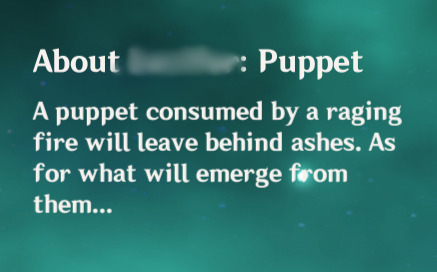
scara/wanderer's design is based off a shugendo monk, a super syncretic religion made of everything that reached japan. but, they have special worship for fudou and the fire ritual.
scara literally faces his suffering and sins (as in, the accumulation of karma in buddhist concepts) in the form of shouki no kami, and he fucking obliterates it just as he gains his vision. this is healing through destruction, at its least symbolic form, reaching enlightment not through meditation and not through "peaceful" methods of quelling emotions, but through goddamn rightful rage. (i am screaming this into the void it makes me nuts)
in a less literal (and exciting) way, kokomi also finds a way to redirect the resentment of the watatsumi soldiers into a path of self advancement. she doesnt punish them for their desire to take this resentment into action against the shogunate, instead she lets them form a special division where they will train not for revenge, but for the protection of their people. the rage is not quelled, the violence is not stopped, just redirected into actions for collective and personal well being. which is what ur supposed to do in buddhism, as far as i understood (the concept of chanda, and all that)
anyway, yeah, healing through violence. i love scaramouche
84 notes
·
View notes
Text

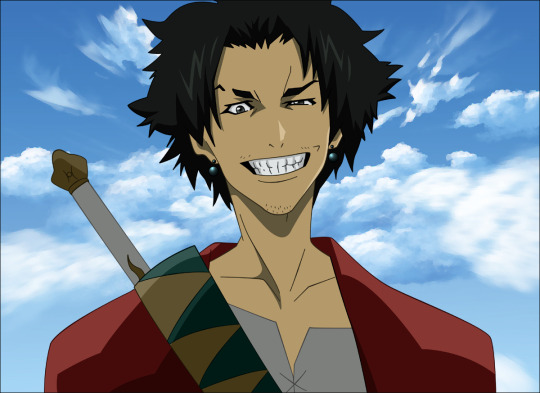


Every day praising an indigenous character Day 38 -
Mugen from Samurai Champloo.
Mugen is one of the three protagonists of Samurai Champloo.
Mugen was born in a penal colony in the Ryukyu Islands (probably on Miyako Island, as it was a penal colony in the past), which in the Edo period was a separate kingdom with close ties to the Satsuma domain of Japan.
His style of clothing suggests he may be of Ainu origin. This appears to be further supported by Mugen commenting that he grew up listening to the same music that an Ainu fugitive played.
Another reason for the similarity may be because the northern Ainu and southern Ryukyu are of the same cultural and genetic lineage.
The Ainu are an ethnic group indigenous to Japan, who historically inhabited the northern regions of the island of Hokkaido, as well as parts of the Sakhalin and Kuril islands. Their culture and language are distinct from those of the Japanese people.
Currently, the Ainu continue to fight for the recognition of their cultural identity and the rights of their people. In 2019, the Japanese government officially recognized the Ainu as an indigenous people of Japan, marking an important milestone in the quest for rights and recognition. However, many challenges remain, including issues related to the preservation of Ainu language and culture, territorial rights, and access to resources.
#Samurai champloo#anime#Every day praising an indigenous character#indigenous character#Native character#Ainu#Japan
21 notes
·
View notes